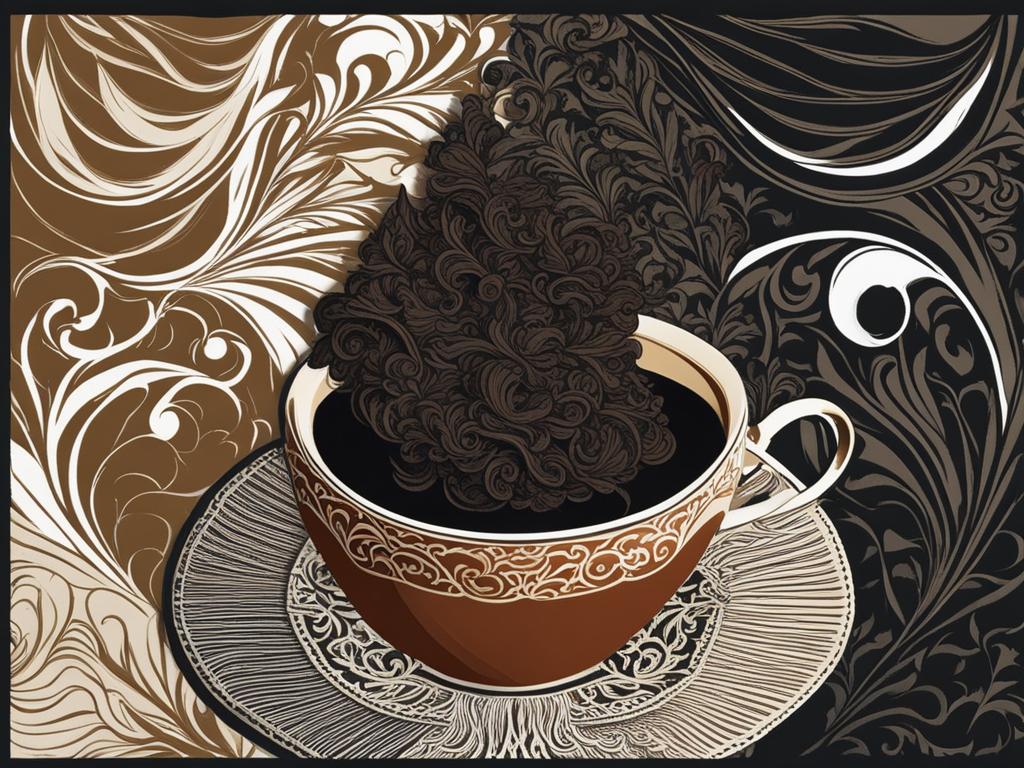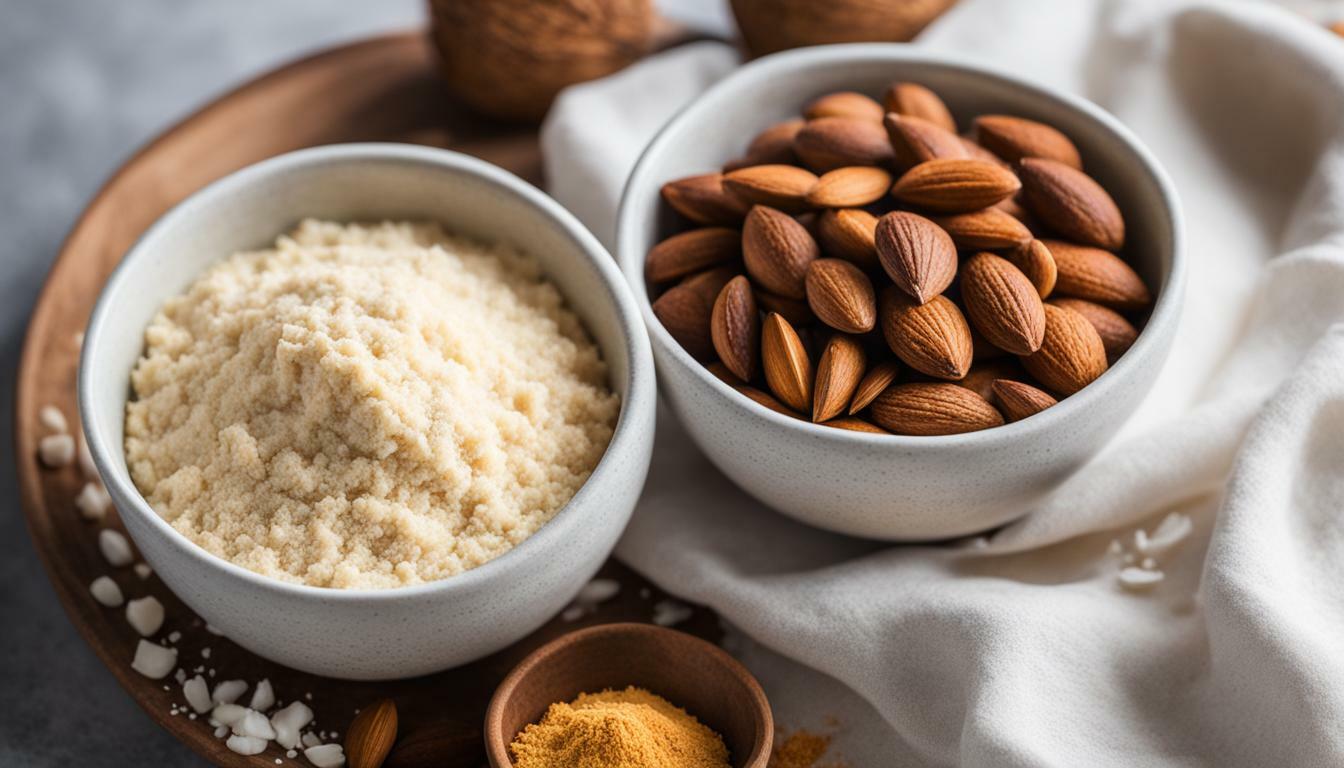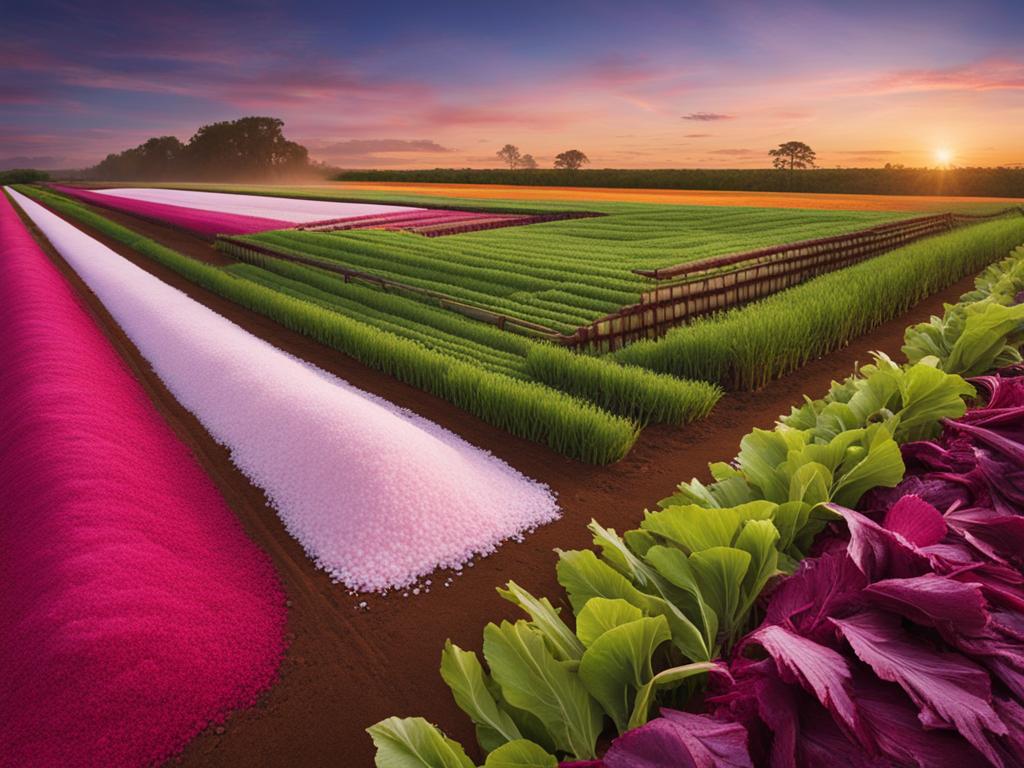Black tea and oolong tea are two distinct types of tea that undergo different processing methods, resulting in variations in appearance, taste, and health benefits. Understanding the differences between these two teas can help tea drinkers make informed choices based on their preferences and desired health benefits.
Key Takeaways:
- Black tea and oolong tea differ in their processing methods, resulting in variations in flavor and appearance.
- Black tea is fully oxidized, resulting in a bold and robust flavor, while oolong tea undergoes partial oxidation, resulting in a range of flavors from light and floral to dark and earthy.
- Black tea contains higher caffeine levels compared to oolong tea, making it a suitable choice for those seeking an energy boost.
- Oolong tea offers a wider range of health benefits, including improved digestion, weight management, and enhanced mental alertness.
- Both black tea and oolong tea are rich in antioxidants, which provide numerous health benefits, including skin health and immune system support.
Is Oolong Tea Black Tea or Green Tea?
Oolong tea, although often mistaken for either black or green tea, is a distinct category of tea that stands on its own. While black tea and green tea are widely known and consumed, oolong tea has gained recognition in recent years for its unique flavor profiles and health benefits.
Oolong tea is produced through a specific processing method that sets it apart from both black and green teas. Unlike black tea, which undergoes full oxidation, and green tea, which undergoes minimal oxidation, oolong tea is partially oxidized. This partial oxidation process contributes to the distinct taste and appearance of oolong tea.
Black tea was the first tea variety introduced to the West and gained popularity due to its robust flavor and long shelf life. Green tea, on the other hand, gained popularity for its health benefits and delicate taste. Oolong tea, with its unique processing method, offers a different experience for tea enthusiasts.
The confusion surrounding oolong tea’s classification as either black or green tea can be attributed to its characteristics. While it shares some similarities with both black and green teas, oolong tea has its own set of flavors, aromas, and health benefits. Understanding the distinct qualities of oolong tea allows tea drinkers to appreciate its nuances and make informed choices based on their preferences.
Oolong Tea Production
| Oolong Tea | Black Tea | Green Tea |
|---|---|---|
| Partially oxidized | Fully oxidized | Minimally oxidized |
| Diverse range of flavors | Strong and robust | Delicate and vegetal |
| Promotes relaxation and mental alertness | May aid in digestion | Rich in antioxidants |
Oolong Tea versus Black Tea/Green Tea Production
Oolong tea, black tea, and green tea are all made from the leaves of the Camellia Sinensis tea plant. However, what sets them apart is their processing methods, specifically the level of oxidation.
Black tea undergoes a complete oxidation process, where the leaves are withered, rolled, and fully oxidized before being dried. This oxidation gives black tea its characteristic dark color, robust flavor, and strong aroma.
On the other hand, green tea is minimally oxidized. The leaves are lightly withered, then steamed or pan-fired to halt oxidation. This minimal oxidation process helps to preserve the natural green color of the leaves and results in a grassy, vegetal flavor profile.
Oolong tea falls in between black tea and green tea in terms of oxidation levels. The leaves are withered, rolled, and partially oxidized, which imparts a range of flavors and aromas. The level of oxidation can vary depending on the specific variety of oolong tea, resulting in a spectrum of tastes from floral and fruity to earthy and toasty.
The table below summarizes the key differences in the production methods for oolong tea, black tea, and green tea:
| Tea Type | Processing Method | Oxidation Level | Color | Flavor Profile |
|---|---|---|---|---|
| Oolong Tea | Withering, Rolling, Partial Oxidation | Partial | Green to Dark (depending on oxidation level) | Varies based on oxidation level |
| Black Tea | Withering, Rolling, Full Oxidation | Full | Dark | Robust, bold |
| Green Tea | Withering, Steaming or Pan-firing, Minimal Oxidation | Minimal | Green | Grassy, vegetal |
By understanding the differences in production methods, tea enthusiasts can appreciate the diverse flavors and characteristics of oolong tea, black tea, and green tea, and discover their personal preferences when it comes to tea enjoyment.
Appearance Differences
When it comes to the appearance of black tea and oolong tea, there are noticeable differences that can be observed. Black teas are often made from small buds, which are considered to be more premium in quality. These small buds contribute to the rich and complex flavors that are characteristic of black tea. On the other hand, oolong teas tend to have larger leaves, which can result in a different drinking experience. The larger leaves of oolong tea allow for a wider range of flavors to develop during the brewing process.
Additionally, the color range of oolong tea can vary depending on its level of oxidation. Lightly oxidized oolong teas may have a greenish hue, while more heavily oxidized oolong teas can have a darker color resembling black tea. This variation in color is due to the different processing methods used for oolong teas, which allow for the development of unique flavors and appearances.
Table: Appearance Differences between Black Tea and Oolong Tea
| Characteristics | Black Tea | Oolong Tea |
|---|---|---|
| Leaf Size | Small buds | Larger leaves |
| Color Range | Dark | Varies (from light green to darker shades) |
| Taste | Rich and complex | Varies depending on oxidation level |
As the table above illustrates, black tea is typically made from small buds, resulting in a rich and complex flavor profile. On the other hand, oolong tea is made from larger leaves, offering a wider range of flavors. The color range of oolong tea can vary from light green to darker shades, depending on its level of oxidation. These appearance differences contribute to the unique characteristics and experiences associated with black tea and oolong tea.
Taste Differences
One of the key distinctions between black tea and oolong tea lies in their taste profiles. Black teas often exhibit rich and robust flavors with notes of honey, caramel, and even a hint of smokiness. These flavors are a result of the full oxidation process that black teas undergo during production.
In contrast, oolong teas offer a unique taste experience with a range of flavors depending on the degree of oxidation. Darker oolong teas can have a rock mineral base, providing a depth of flavor not commonly found in black teas. On the other hand, light oolong teas may have delicate and floral notes, reminiscent of green teas. This variation in taste makes oolong tea more accessible to first-time tea drinkers who may find its flavors more approachable compared to the boldness of black teas.
Overall, the taste differences between black tea and oolong tea provide tea enthusiasts with a diverse range of flavor options to explore and enjoy.
| Taste Differences | Black Tea | Oolong Tea |
|---|---|---|
| Flavor Profile | Strong and robust, with notes of honey, caramel, and smokiness | Varies depending on oxidation levels, from rock mineral base to light and floral flavors |
| Accessibility for First-Time Tea Drinkers | May be too bold for some individuals | Offers a milder taste with a wide range of flavors |
Taste Quotes:
Black tea provides a bold and robust flavor that can be quite invigorating. If you enjoy the deep, rich taste of honey and caramel, black tea is definitely worth a try.
Oolong tea, on the other hand, offers a more nuanced taste experience. The varying levels of oxidation result in a wide range of flavors, making it a fascinating tea to explore for those looking for something different.
Table: Comparison of Tea Brew Colors
| Tea Type | Brew Color |
|---|---|
| Black Tea | Deep red |
| Oolong Tea (Lightly oxidized) | Light green or yellow |
| Oolong Tea (Darker oxidized) | Red to dark red |
Health Benefits
Both black tea and oolong tea offer numerous health benefits, thanks to their rich antioxidant content. Antioxidants help protect the body from harmful free radicals, which can cause cellular damage and contribute to various health issues. Regular consumption of black tea and oolong tea can support overall well-being and provide specific advantages.
One of the key health benefits of both teas is improved blood circulation. The antioxidants present in black tea and oolong tea help promote healthy blood flow, which can benefit cardiovascular health and reduce the risk of heart disease. These teas also contain compounds that may help lower cholesterol levels, further supporting heart health.
When it comes to caffeine content, oolong tea generally has lower levels compared to black tea. This makes oolong tea a suitable option for those who are sensitive to caffeine or looking to reduce their intake. Additionally, oolong tea has been associated with weight loss benefits. Its active compounds can help boost metabolism and promote fat burning, making it a popular choice for individuals looking to support their weight loss goals.
It’s important to note that while black tea and oolong tea offer health benefits, individual results may vary. The overall impact on health depends on various factors such as overall diet, lifestyle, and genetic predispositions. It’s always a good idea to consult with a healthcare professional before making any significant dietary changes or incorporating tea into a specific health regimen.
Key Points:
- Both black tea and oolong tea are rich in antioxidants, offering numerous health benefits.
- Regular consumption of black tea and oolong tea can improve blood circulation and support heart health.
- Oolong tea generally has lower caffeine levels compared to black tea, making it a suitable choice for those who want to reduce their caffeine intake.
- Oolong tea may also aid in weight loss due to its metabolism-boosting properties.
- Individual results may vary, so it’s recommended to consult a healthcare professional before making significant changes to your diet or health regimen.
Conclusion
In conclusion, the differences between black tea and oolong tea are significant, making them distinct choices for tea enthusiasts. While black tea is fully oxidized and offers robust and strong flavors, oolong tea falls somewhere between black and green tea in terms of oxidation and presents a wider range of flavors and characteristics.
Black tea, with its deep red brew color and small buds, has been a favorite for centuries, while oolong tea, with its larger leaves and varying colors, offers a more visually diverse experience.
When it comes to taste, black tea boasts honey, caramel, and smokey notes, while oolong tea can have a mineral base with light and floral undertones. Additionally, oolong tea contains lower levels of caffeine, making it a suitable choice for those looking for a milder option or supporting their weight loss goals.
By understanding the differences between black tea and oolong tea, tea drinkers can make informed choices based on their preferences and health needs. Exploring the unique characteristics of each tea type can enrich the tea-drinking experience and pave the way for a more personalized and enjoyable journey into the world of tea.
FAQ
What is the difference between black tea and oolong tea?
Black tea and oolong tea differ in their processing methods, appearance, taste, and health benefits.
Is oolong tea considered black tea or green tea?
Oolong tea is neither black tea nor green tea. It is a distinct tea category that differs from both.
How is oolong tea produced?
Oolong tea is made from the Camellia Sinensis tea plant, similar to black and green teas, but undergoes a different processing method.
What are the appearance differences between black tea and oolong tea?
Black teas often consist of small buds, while oolong teas tend to have larger leaves. Oolong teas can also have a wide range of colors, from green to darker shades.
How do the tastes of black tea and oolong tea differ?
Black teas often have honey, caramel, or smokey notes, while oolong teas can have a range of flavors depending on their oxidation levels, including a rock mineral base and light and floral notes.
What is the difference in brew color between black tea and oolong tea?
Black tea produces a deep red brew color, while oolong teas can have a range of colors depending on their oxidation levels, from light green or yellow to dark red.
What are the health benefits of black tea and oolong tea?
Both black tea and oolong tea are rich in antioxidants and offer health benefits such as improved blood circulation and skincare. However, oolong tea generally contains lower levels of caffeine, making it a suitable choice for those looking to reduce caffeine intake or support weight loss efforts.



